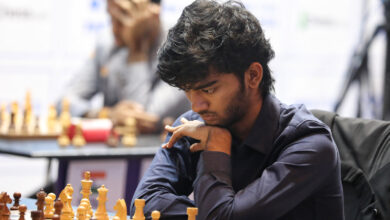Rohit Sharma forgets poor form after few good shots, can learn from Virat Kohli

In the first two games, India has won one and lost one. That’s where the three teams stand after the first round. It isn’t surprising that multi-nation tournaments are far more exciting than a bilateral series, for there’s something riding on every game. While Sri Lanka and Bangladesh are almost full strength, India are playing their B team, and that allows us to track their performance objectively.
Shikhar’s rise
While Shikhar Dhawan’s numbers in 50-over cricket have been good throughout, his T20 numbers were a slight concern from the beginning. It’s surprising that even after playing almost every game in every edition of the IPL and batting at the top of the order, he didn’t make the kind of impact he should have. It’s not that he hasn’t been scoring runs, just that one of his teammates almost always performs and overshadows the runs he scores. Shikhar’s strike-rate of 121 in T20 was always held against him. In fact, in IPL, the strike-rate used to drop to 117 in power-play overs, far from ideal for an opener.
Since the last edition of IPL in which he finished the third highest scorer, there’s a remarkable shift in Shikhar’s power-play game. His strike-rate in that phase has shot up to 141, and that has a lot to do with his mastering the pick-up shot off the legs. Earlier, his working areas were through off-side, off the front and back foot, which in turned encouraged bowlers to bowl straighter to him. But since he’s started taking the aerial route to balls finishing within the stumps, bowlers have found it extremely difficult to contain him. He’s no longer the batsman living in his partner’s shadow.
Rohit’s form lesson
Since the start of 2018, Rohit has crossed 50 only once in 15 innings across all formats in International cricket. While one can understand his issues against incoming deliveries early in his innings – he has the tendency to fall over in his stance, leading to the front foot getting planted across. That makes him vulnerable against sharp, incoming deliveries – his other modes of dismissals are difficult to fathom. It shows that scoring runs is far more complicated than simply ironing out flaws, for the technical aspect is just one small piece in the jigsaw puzzle.
Rohit is experienced enough to know that he needs to give himself a bit more time, but somehow he’s not able to do so. He hasn’t looked woefully out of form and perhaps that’s why he forgets about his poor form after a few good shots and ends up playing one shot too many.
Kohli also went through a similar patch in England and came out of it a better player. I’m sure Rohit will show the same resolve. There’s a more important takeaway from these lean phases— the difference between making and breaking a player is often the patience you show with him.
Pant missing out
For over a year, Rishabh Pant had waited for his chance and this series is the biggest opportunity he’s likely to get for a while. In the first game, he was asked to bat lower down the order and struggled to get going. The same happened with Manish Pandey and both copped the blame for India falling short. Realising that batting down the order in a T20 game won’t get the best out of him, Rishabh was promoted to No 3 in the second game. Bangladesh’s below par score had set the stage nicely for him but he got out trying to hit an expansive shot. There’s no doubt he’s got immense potential but the limited sample size also suggests he needs to develop another gear in his batting, and that must happen soon.
Shankar cashing in
On the other hand, Vijay Shankar has risen to the occasion with the ball and has shown signs of a player who could be invested in. It won’t be a bad idea to promote him in the order in one of the games to test his batting skills. After all, the eternal search for a pace-bowling all-rounder isn’t over yet.







